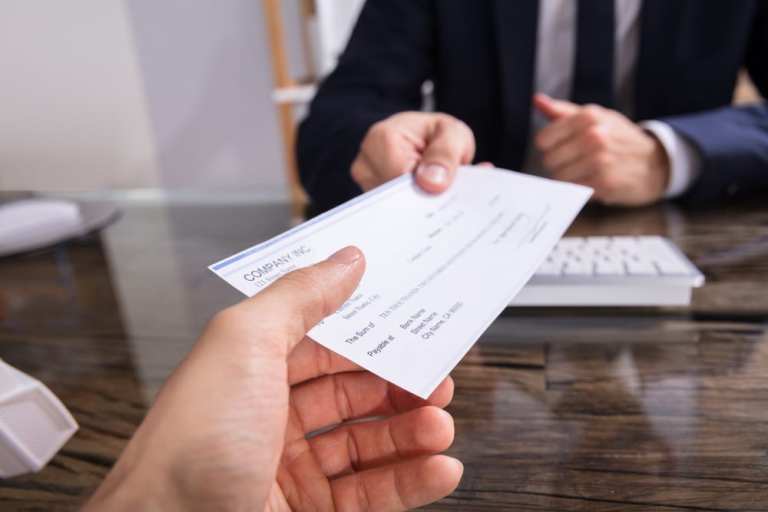Three percent of, well, anything is not a lot. It seems an especially low number when considering this stat: Only 3 percent of companies meet customer demands for instant business-to-consumer (B2C) payments.
How about a bigger number, though equally disquieting? As much as 80 percent of firms still rely on paper checks when it comes to making business-to-business (B2B) payments.
Demand is there, pent up, for greenfield opportunities to bring speed and digitization to payments across a range of use cases. As noted in the May Faster Payments Tracker, the global real-time payments market is expected to grow 30 percent between 2018 and 2025.
However, crossing the Rubicon from paper to instant payments involves a shift in corporate mindset — and getting there is no easy task. As Fiserv Vice President of Digital Payments and Data Aggregation Paul Diegelman told PYMNTS in a recent interview, there’s a natural hesitancy among executives who are used to sending paper to “dive right [into]” what he termed “the check-replacement cycle,” even if they know they want to make the transition. After all, he told PYMNTS, we all know how checks work, but, when moving into real-time payments, there can be a lot of confusion and choices to navigate.
Firms must know about the rails being used, whether sponsor banks might be needed, when money will be received and — to compound concerns — when the sender will know that the receiver has the funds in hand. He noted, too, that “if I am in a company that is processing checks, it is unlikely that I also have a faster payment regulatory compliance attorney. There’s a lot to learn to do it the first time around when embracing faster payments, and this slows people down.”
He said sandboxes and developer portals can allow tech teams at corporates to test APIs. There are also providers that offer techniques to help with cash-flow forecasting for treasury departments. After all, faster payments impact cash flow, too. Yet, by and large, a number of functions and sandboxes that need to be checked off when deciding to “go faster” with payments cannot be offloaded or packaged — and Diegelman said firms must hire the resources that give them the advice and guidance they want and need.
Advertisement: Scroll to Continue
The Use Cases
Beyond the complexities inherent in replacing the check, Diegelman said that, at times, there’s a level of education that must take place between corporates and consumers when it comes to B2C payments. The educational outreach varies with demographics, as younger consumers are apt to have their phones in hand nearly all the time.
“They’re always looking for things to use their phone[s] for,” he told PYMNTS. “Receiving money and signing up to receive money [from company payouts] is something they’re naturally inclined to do.”
Beyond peer-to-peer (P2P) payments, where Zelle has taken root as people send money to family and friends (with $39 billion in volume logged in the first quarter), Diegelman said real estate is a vertical that is seeing increased adoption of P2P, especially with smaller landlords.
Why B2B Lags
When asked why B2B has lagged so much in moving away from checks, and toward more streamlined ways of paying suppliers and vendors, Diegelman said corporate accounts payable and receivable systems “work pretty well in a paper-check and paper-remittance model.” Beyond that, to digitize a B2B payments model, on the face of it, may not pique much executive interest. Most companies do not send a lot of checks, as measured in volume. An initial examination of the economic payoff in switching to digital may not vault such an undertaking to “the top 20 projects” on the corporate roadmap.
“Oftentimes, companies dedicate tech resources to new products or better serving their customers so that they can generate more revenue, and deepen their client relationships,” he said.
The Larger Picture
Stepping back from the granularities of B2C and B2B payments, though, the executive said the groundswell of faster payments is inexorable. He noted that, in the early part of the millennium, countries like South Korea and Iceland launched faster payment initiatives. As it stands now, roughly 40 countries have at least some sort of real-time payments initiative in the planning stages or in deployment. Elsewhere, and a bit closer to home, the Federal Reserve has been mulling a real-time payments system — and, of course, there’s the aforementioned Zelle, among other offerings already in the field. Separately, Visa Direct debuted in the U.K. in 2017.
“So, at this point, we’ve got more and more sovereign interests that are creating a foundation for [real time],” Diegelman told PYMNTS. “Now, [with] 40 countries, roughly 25 percent of all the countries in the world, … we’ve got a ways to go there still.”
Thus, the sovereign interests exist as a foundation for the rails.
Speaking of rails, there are certainly a lot of them. Diegelman said that “we are probably going to reach a point where [there are] too many rails,” and where confusion may reign 10 or 15 years from now — meaning the “arm wrestling” over which networks to use to split the dinner tab, digitally, will get worse before it gets better.
By and large, he noted, the trends are in place. The demographic shift will continue, and consumers who use their phones “as the center of their financial existence will continue to drive adoption, which will continue to provide the opportunity for more rails.” Diegelman added, “From a sovereign standpoint, most countries are interested in continuing this path, too.”




